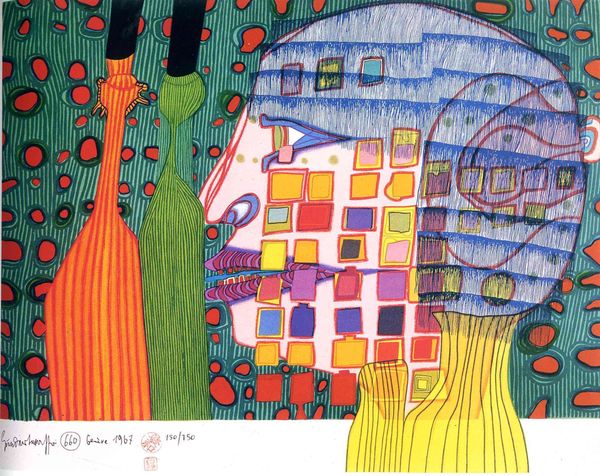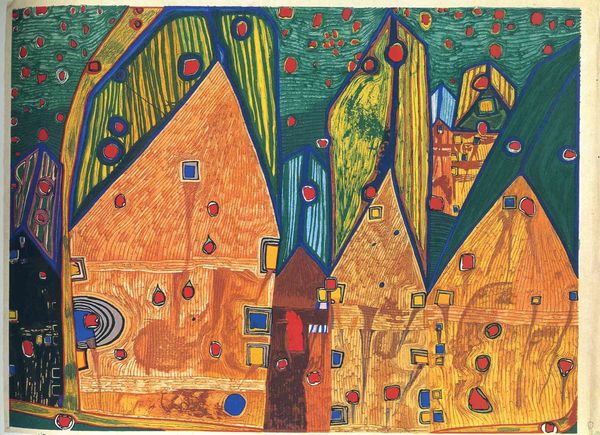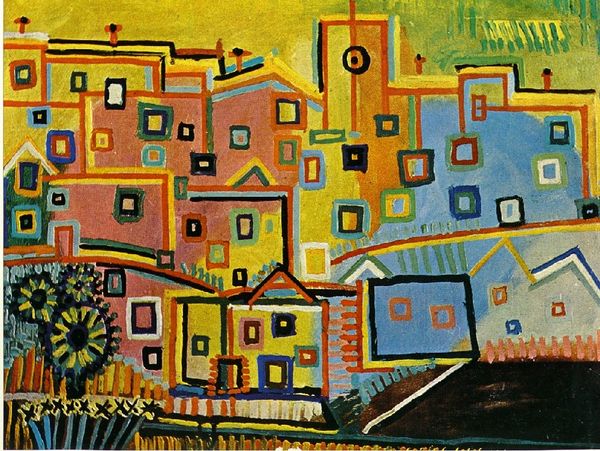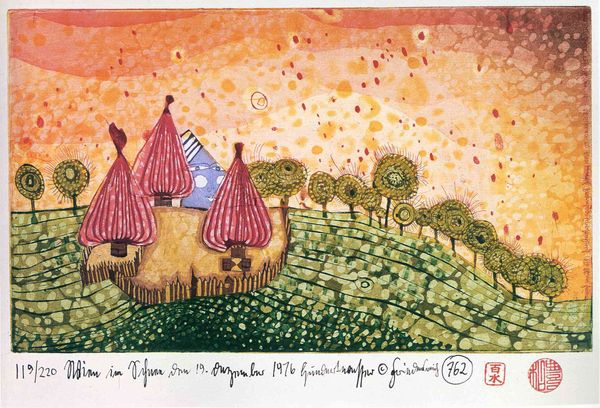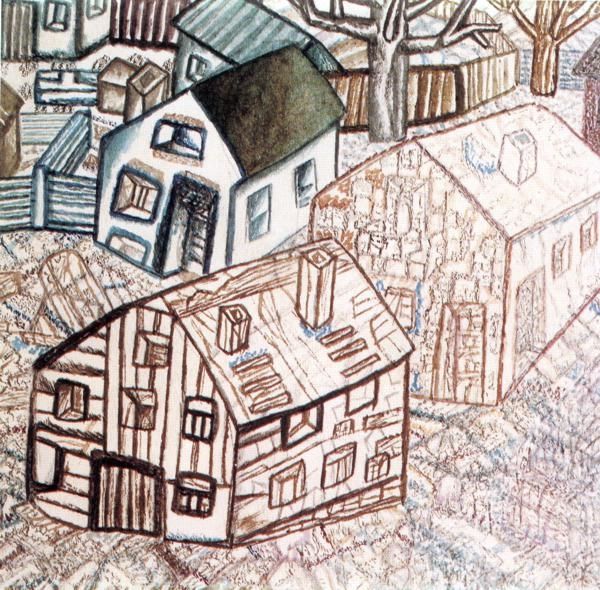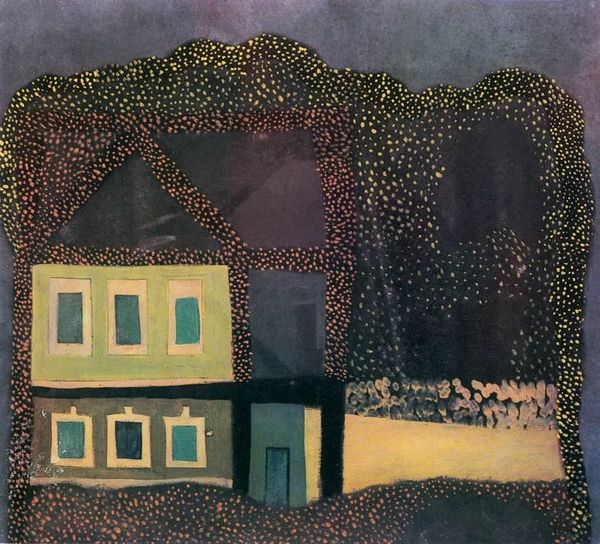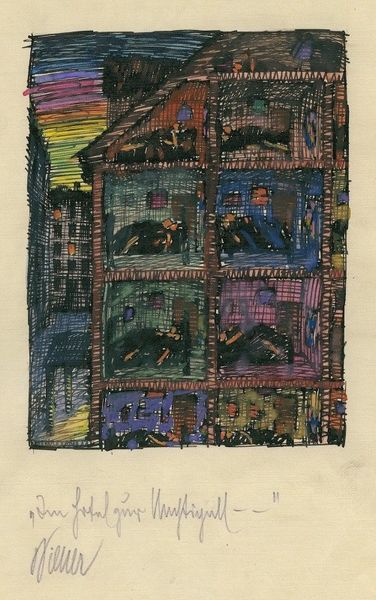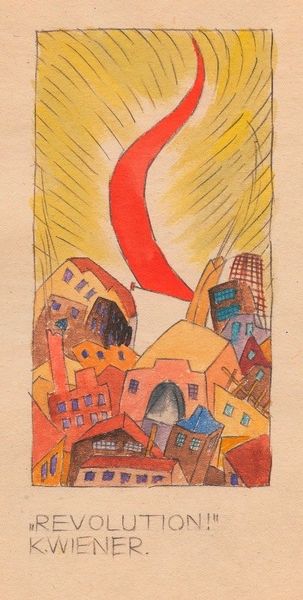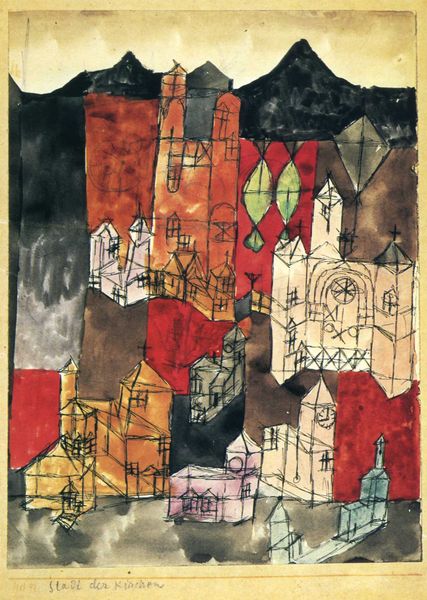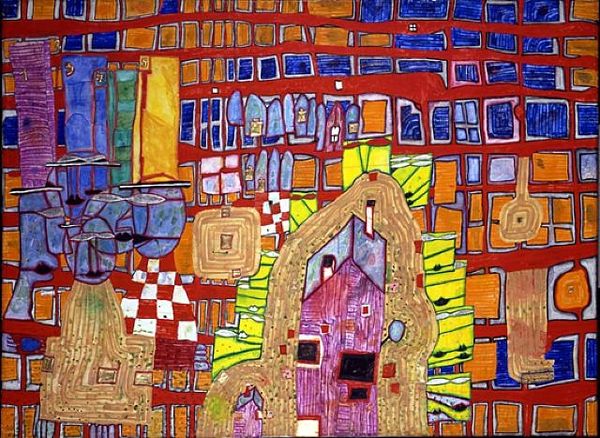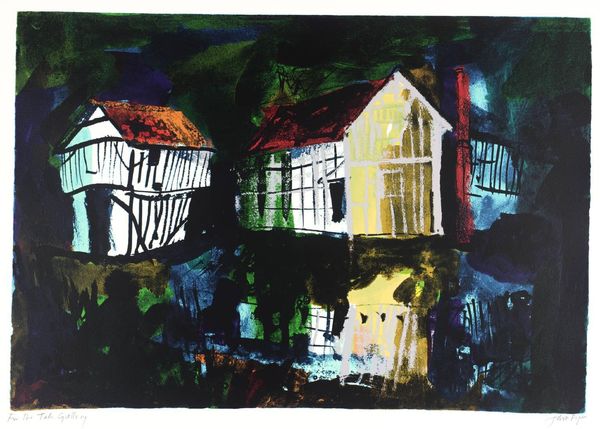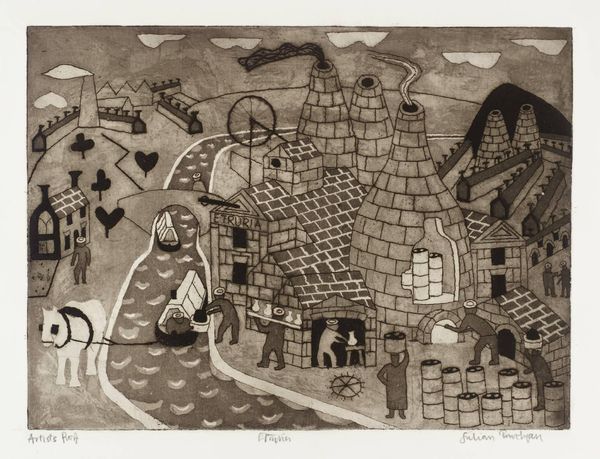
Copyright: NAMIDA AG, Glarus (displayed with the permission of Hundertwasser Non-Profit Foundation) The displayed work of art is protected under the copyright law. In particular, it is not permitted to reproduce, to alter, to print or to publish these works of art. Violations will be prosecuted according to civil and criminal law.
Curator: Welcome. We are about to look at "826 Nostalgic Roof" by Friedensreich Hundertwasser, crafted in 1981. It’s a mixed-media piece incorporating etching, collage, and printmaking. Editor: It strikes me immediately as intentionally raw. The house depicted seems to ripple and breathe, yet the overall impression is somber, even claustrophobic, intensified by the densely packed lines in the background. Curator: Absolutely. The house is rendered with an almost cartoonish distortion of perspective; note how the windows appear asymmetrically placed, challenging traditional architectural representation. This echoes Hundertwasser’s broader philosophy against straight lines and rigid forms. The technique – employing etching – speaks to that resistance; the inherent imprecision allows for expressive texture and line work. Editor: Precisely. And the materials contribute significantly. Consider the texture of the roof: that's no simple wash of color but a combination of media generating palpable layers. Knowing that it’s mixed media underscores Hundertwasser's deliberate departure from pristine printmaking. This method integrates the 'handmade' quality. It is about more than replicating an image. It emphasizes the labor and processes visible in the outcome. Curator: He intentionally complicates spatial relationships, using the collage elements and printmaking to push the facade forward and flatten the surrounding space simultaneously. This deliberate manipulation generates visual tension and embodies the core elements of expressionism. Editor: We must note the color scheme, as well. That melancholic palette and, again, the labor invested! These earthy pigments combined with stark blues point to a sense of decay—but, importantly, beauty and acceptance within that decay. Curator: That leads to what one can only call Hundertwasser's artistic ecology. The visual complexity and those slightly off-kilter lines contribute to a feeling of vibrant life emerging within, rather than despite, entropy. Editor: I'm left thinking about the implications this carries regarding humanity’s role as architects, as builders, as consumers and destroyers of spaces… This artist seems very critical. Curator: He offers instead a vision that acknowledges imperfection and growth; thus, these houses—they're never truly complete or still, perpetually evolving within their environments. Editor: Thank you; this fresh appreciation underscores what art history can achieve: reveal making as meaning, rather than simply depict beauty as such.
Comments
No comments
Be the first to comment and join the conversation on the ultimate creative platform.

